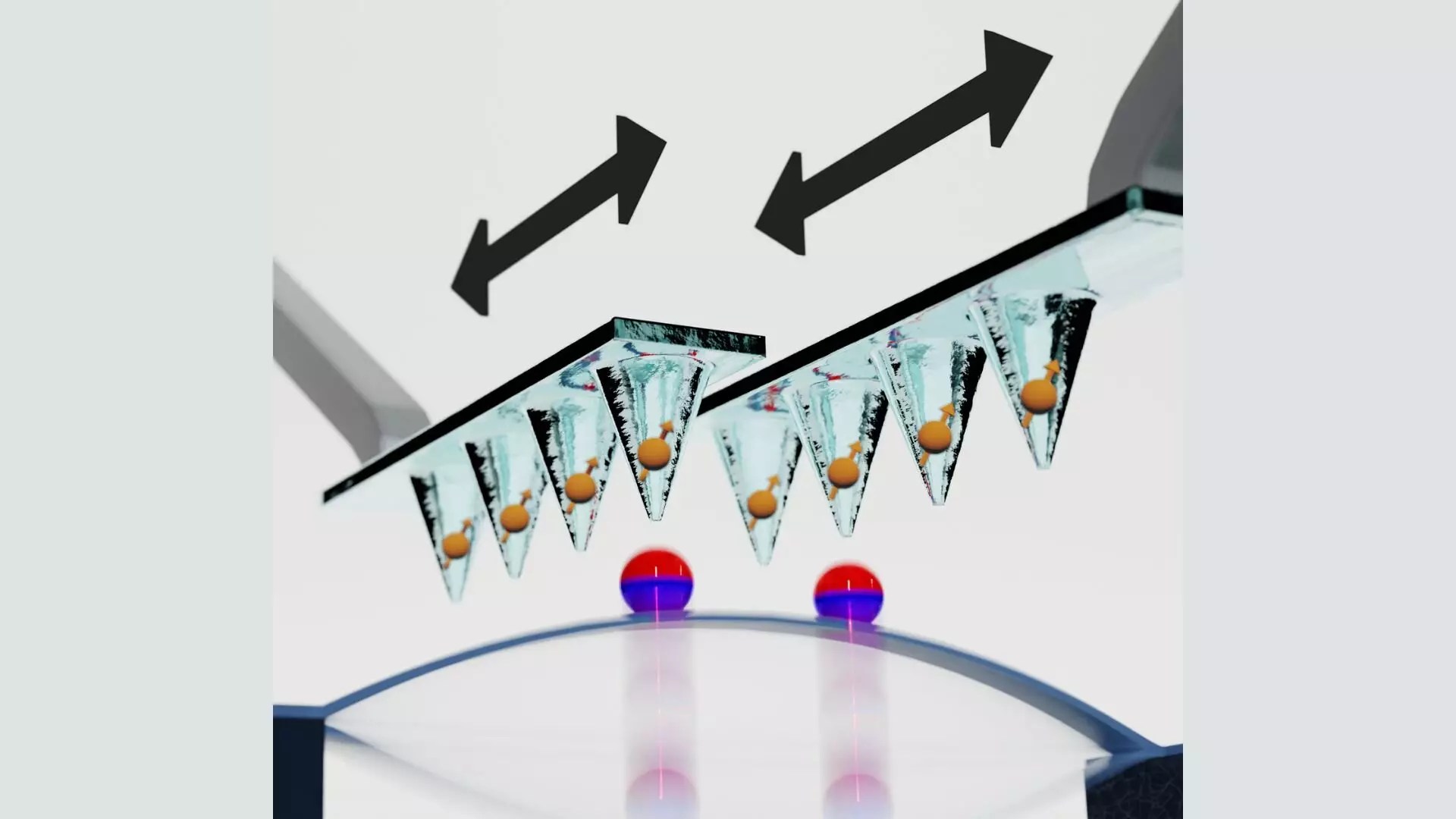As quantum computing continues to revolutionize our understanding of information processing, a set of unique challenges arises, especially concerning the scalability and reliability of qubits. Traditional solid-state spin qubits exhibit long coherence times indispensable for quantum operations, yet they struggle with interaction limitations essential for developing extensive quantum networks. In a groundbreaking study published in Physical Review Letters, researchers propose an innovative method that promises to enhance the interaction capabilities of these qubits through the integration of nanomechanical resonators. This approach, emerging from the collaborative efforts at Harvard University under the guidance of Professor Mikhail Lukin, aims to address the fundamental obstacles current quantum systems face.
Solid-State Spin Qubits: Strengths and Weaknesses
Solid-state spin qubits, particularly those sourced from nitrogen-vacancy (NV) centers in diamonds, are uniquely positioned in the quantum computing landscape. Their long coherence times are advantageous for maintaining stability and integrity in information storage. However, the inherent constraints imposed by their magnetic dipole interactions—the short-distance nature of their connectivity—presents significant hurdles for scalability. As pointed out by Frankie Fung, a graduate student and lead author of the study, typically demonstrated configurations have relied on proximity interactions restricted to tens of nanometers. This reliance creates substantial hurdles in controlling and manipulating large arrays of qubits consistently.
Despite their advantages, NV centers are not immune to challenges that arise from their operational limits, fundamentally hampering their use for larger quantum registers. The proposed study, however, breathes new life into the potential of these qubits through a creative marriage with nanomechanical structures.
Nano-Mechanical Resonators: Bridging the Gap
The novel architecture proposed by the research team focuses on the interplay between NV centers and mechanical resonators. These tiny oscillating structures, typically operating at the nanoscale frequency range, not only serve practical functions in enhancing qubit interactions but also extend their range. By using mechanical resonators to mediate interactions between qubits, the team seeks to create a non-local interaction framework capable of significantly broadening the connectivity among spin qubits.
The design outlined achieves remarkable flexibility, with qubits housed within individual scanning probe tips that can be maneuvered over the mechanical resonator. This setup facilitates programmable connections among qubits, providing unprecedented control over their interactions, which is crucial for advanced quantum information processing.
The Mechanics of Quantum Information Transfer
A pivotal element in the proposed system is the interaction between the qubits and the mechanical resonator, mediated by an adjacent micromagnet. This arrangement allows for a dynamic interplay in which changes in magnetic fields can influence the electron spin states of the NV centers, enabling effective spin-spin interactions even at considerable distances. Such non-local interactions are crucial for fostering entangled states among qubits, which are the backbone of quantum computing.
Moreover, the quality factor of the nanomechanical resonators, reported around one million at low temperatures, emphasizes their potential for maintaining highly coherent mechanical motion. Although still short of the best-available quality factors, this initial performance suggests promising paths forward, as ongoing improvements may reach the levels necessary to establish this innovative architecture.
Exploring the Protocols of Control and Measurement
One of the most compelling aspects of the research involves the proposed integration of an optical cavity with the nanomechanical resonator. This integration has the potential to radically refine measurement accuracy and precision in controlling mechanical motion, culminating in the ability to prepare the resonator in a ground state. Such enhancements not only broaden experimental possibilities but could revolutionize how information is transferred between the spin qubits and their mechanical counterparts.
Fung and the research team highlight the phenomenal versatility of nanomechanical resonators as intermediaries between disparate types of qubits. By facilitating interactions with a range of forces, these resonators pave the way for hybrid quantum systems that could amalgamate different qubit advantages while mitigating their respective downsides.
The Vision for Future Quantum Systems
Looking forward, the architecture proposed by Fung and his colleagues holds tantalizing implications for future quantum networks. Through constructive feedback from the continual refinement of their methods, researchers envision a reality where large-scale quantum processors become achievable. The potential for integrating mechanical resonators with other system components opens the door to advanced quantum communication protocols with far-reaching applications, from cryptography to complex simulations.
In an era where the stakes of quantum technology are increasingly pronounced, this research exemplifies an actionable pathway forward, emphasizing the significance of combining innovative materials and mechanical principles to unlock the full potential of quantum computing. The journey toward a scalable quantum future is rife with challenges, but with pioneering contributions like these, the horizon of quantum technology appears increasingly bright.


Leave a Reply